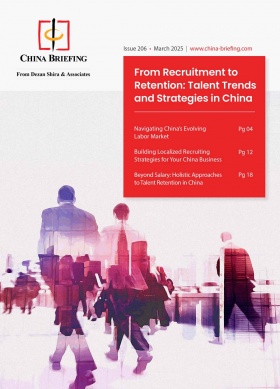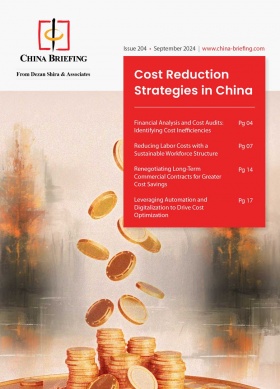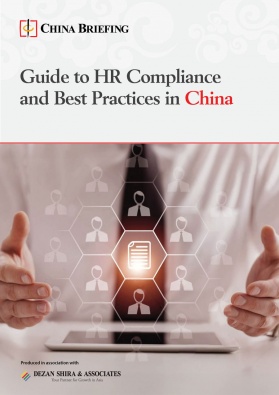China Launches First-Ever National Childcare Subsidy: What You Must Know
China’s childcare subsidy policy in 2025 is reshaping the child-rearing market and creating new opportunities and challenges for foreign companies operating in China. This article explores how the policy affects demand, consumer behavior, and sectoral winners, while offering strategic insights for foreign-invested enterprises (FIEs) navigating this evolving landscape.
In a significant step toward addressing the country’s declining birthrate and rising childcare costs, China has introduced its first-ever national childcare subsidy implementation plan. Announced on July 28, 2025, the policy establishes a unified annual cash subsidy of RMB 3,600 (US$496) per child under the age of three—regardless of birth order—marking a new phase in China’s approach to population and social policy.
This national-level subsidy system represents a strategic pivot in how the government supports families and encourages childbirth amid mounting demographic pressure. It also signals a shift from fragmented local pilot programs to a standardized, centrally coordinated benefit structure. Scheduled to take effect retroactively from January 1, 2025, the policy offers direct financial support to millions of families, while aligning with China’s broader goal of building a more “fertility-friendly society.”
While the amount alone is unlikely to cause a dramatic rebound in birth rates, its introduction carries substantial symbolic and strategic importance.
This article explains the policy’s main features and analyzes its broader economic and social implications—from its potential impact on consumption and family planning decisions to investment opportunities and associated risks.
China’s new childcare subsidy explained
1. Who is eligible for the childcare subsidy?
Beginning January 1, 2025, the subsidy is available to children under the age of three who are:
- Born in accordance with Chinese laws and regulations; and
- Hold Chinese nationality.
This means all legally born first-, second-, or third-born children under three years old can qualify, regardless of family size.
2. What is the subsidy amount?
The national baseline subsidy is RMB 3,600 (US$496) per child per year, disbursed annually until the child turns three. This totals RMB 10,800 (US$1,488) over three years for children born on or after January 1, 2025.
For children born before January 1, 2025, but not yet three years old, the subsidy will be prorated based on the number of eligible months remaining until their third birthday.
3. Who can apply for the subsidy?
Each household designates one applicant per eligible child. The applicant must be one of the following:
- One of the child’s parents (biological or adoptive); if divorced, the parent with custody;
- A legal guardian, if both parents are unable to act as guardians.
4. What information is required to apply?
Applicants must submit the following:
For the child:
- Name, ID type and number, date of birth, gender, birth order, and household registration address.
For the applicant:
- Name, ID type and number, mobile number, current residence, and relationship to the child.
Payment details:
- Type of bank account and full account information to receive the subsidy.
5. How can families apply?
An online application is preferred. Applicants may apply via the official childcare subsidy mini-programs on Alipay or WeChat, or through the local government services portal of the province where the child is registered.
Offline applications can be submitted at the local township government office or subdistrict (street) office where the child’s household is registered.
6. When does the application open?
Local governments are currently finalizing implementation plans. Applications are expected to open across the country starting in late August 2025.
7. Are there related preferential policies?
Yes. The subsidy enjoys several favorable tax and income treatment:
- The childcare subsidy is exempt from individual income tax.
- It is excluded from income calculations when determining eligibility for public assistance programs such as minimum livelihood guarantee or extreme hardship assistance.
How China’s childcare subsidy may help curb population decline
China’s newly introduced national childcare subsidy marks a significant policy shift in the country’s response to declining birth rates. While the annual RMB 3,600 (US$496) per child subsidy alone is unlikely to trigger a dramatic baby boom, it plays a strategic role in stabilizing fertility expectations and mitigating further declines.
First, the policy serves as a foundational “floor effect” — easing economic burdens for young families, especially in lower-income regions. This helps prevent more households from opting out of parenthood entirely, which researchers identify as a crucial stabilizing force in low-fertility societies.
Second, the central rollout of a unified, cash-based subsidy system delivers a strong signal that supporting childbirth is now a long-term national priority. This shift in narrative — framing fertility as a shared societal responsibility rather than a private family matter — helps reshape public attitudes toward having children.
Third, the policy lays the infrastructure for expansion. Its unified administrative and fiscal design allows for future adjustments in coverage and benefit levels, depending on effectiveness and available resources. Experts view this as a move from fragmented local pilots toward a scalable national solution.
However, international experience suggests cash alone has a limited impact. For meaningful demographic change, China must pair subsidies with complementary reforms in childcare services, education, housing, and parental leave — areas the government is actively developing. The real promise lies in a holistic, long-term fertility support system.
In short, the childcare subsidy is not a silver bullet, but a critical first step. It reflects a strategic pivot from reactive to proactive fertility governance, signaling China’s broader commitment to building a family-friendly policy ecosystem — with the potential to slow, if not reverse, its population decline.
Also read: China’s Population Decline – The Impact on Business, the Economy, and Labor Markets
Broader picture: Boosting consumption through targeted support
Beyond its demographic goals, China’s national childcare subsidy is poised to deliver meaningful economic stimulus — especially in the realm of household consumption. By injecting around RMB 100 billion (US$13.8 billion) annually into households with young children, the policy provides direct liquidity to families with the highest marginal propensity to consume.
In the short term, this financial support is likely to be channeled into inelastic and essential goods — such as infant formula, diapers, clothing, and early education products. This targeted demand can boost the maternal and childcare industries, generating ripple effects across upstream and downstream supply chains. Moreover, the policy aligns with broader government efforts to shift from investment-led to consumption-driven growth, especially in tier 3 and 4 cities and rural areas, where the subsidy has greater purchasing power.
From a structural perspective, the childcare subsidy also reflects a more inclusive approach to public spending, whereby the state leverages fiscal tools not just to stimulate aggregate demand, but to reduce the financial risks of core livelihood expenses. This marks a shift from simply expanding consumption to safeguarding families’ consumption capacity, ensuring that essential spending is not crowded out by parenting costs.
In the long run, increased investment in early childhood development may improve human capital quality, which in turn can enhance productivity and long-term household income. This dual effect — supporting today’s spending and investing in tomorrow’s workforce — positions the childcare subsidy as a strategic lever for sustainable consumption growth in a rapidly aging society.
Sectors to benefit from China’s childcare subsidy policy
Infant consumer goods
The most immediate beneficiaries of China’s childcare subsidy policy are producers of infant staples, such as formula milk, diapers, baby wipes, and related products. These items represent inelastic demand—necessary regardless of household income. The subsidy effectively boosts families’ purchasing power, enabling greater spending or an upgrade in product quality. In a market expected to reach RMB 8 trillion (US$1.1 trillion) by 2025, the policy offers a stabilizing force amid broader consumption headwinds. It is also likely to accelerate industry consolidation, favoring established domestic brands with strong reputations and extensive distribution networks.
Maternal and infant retail platforms
Retailers and service platforms operating in the mother-and-child segment will also see demand tailwinds. However, the policy’s impact will be most visible among companies that integrate product sales with services, content, and community-building. Firms capable of deploying an online–offline model (OMO), cultivating loyal membership ecosystems, and delivering holistic parenting solutions will better capture the long-term value of increased customer traffic. These platforms stand to benefit not only from higher sales volume but from deeper user engagement and extended lifetime value.
Childcare and early education
Childcare services—including infant daycares and early education centers—are core to the government’s “inclusive childcare” agenda and will likely experience increasing demand. Yet, this sector is also marked by fragmentation, safety and compliance concerns, and high operational costs. While market size is expanding, especially in third- and fourth-tier cities, businesses face constraints on pricing and profitability due to affordability goals. Scalable, compliant operators offering reliable care at accessible prices will be best positioned.
Assisted reproductive services
Although not directly tied to the subsidy, fertility treatment providers may benefit as more couples are encouraged to consider childbearing, knowing state support exists. With infertility rates rising and government policy endorsing expanded access to assisted reproductive technologies, this segment could grow in both volume and legitimacy. Regulatory normalization and greater public awareness are expected to drive higher penetration over time, offering opportunities for specialized healthcare providers with strong clinical and ethical standards.
Navigating potential challenges for foreign companies
While China’s national childcare subsidy policy opens new market opportunities, foreign-invested enterprises (FIEs) and global brands targeting Chinese families must navigate several challenges that could affect business outcomes:
- Uncertain fertility response: Despite direct cash incentives, the policy may not generate a significant rebound in birth rates. Deep-rooted social factors—such as urban living costs, educational pressure, and evolving family values—continue to weigh heavily on fertility decisions. FIEs must avoid overestimating short-term demand elasticity and instead adopt realistic projections grounded in demographic trends.
- Local implementation gaps: For foreign brands unfamiliar with China’s multilayered administrative system, understanding how policies are implemented at the local level is crucial. Delays in disbursement, uneven rollout across provinces, or limited awareness among target families could delay or distort the policy’s market impact. FIEs should closely monitor regional developments and adjust go-to-market strategies accordingly.
- Rising domestic competition: China’s policy tailwinds are expected to attract more local entrants into the childcare and parenting economy. Many of these players enjoy advantages in pricing, localization, and distribution reach. Foreign companies may face intensified competition from nimble domestic brands—especially in lower-tier cities, putting pressure on margins and market share. FIEs should consider partnerships, brand localization, and premium positioning to stay competitive.
In short, while the childcare subsidy policy enhances long-term demand certainty, foreign businesses must be strategic in execution. Success will depend not only on product-market fit but also on how well companies adapt to local regulatory nuances, consumer behavior, and a fast-evolving competitive landscape.
About Us
China Briefing is one of five regional Asia Briefing publications, supported by Dezan Shira & Associates. For a complimentary subscription to China Briefing’s content products, please click here.
Dezan Shira & Associates assists foreign investors into China and has done so since 1992 through offices in Beijing, Tianjin, Dalian, Qingdao, Shanghai, Hangzhou, Ningbo, Suzhou, Guangzhou, Haikou, Zhongshan, Shenzhen, and Hong Kong. We also have offices in Vietnam, Indonesia, Singapore, United States, Germany, Italy, India, and Dubai (UAE) and partner firms assisting foreign investors in The Philippines, Malaysia, Thailand, Bangladesh, and Australia. For assistance in China, please contact the firm at china@dezshira.com or visit our website at www.dezshira.com.
- Previous Article Cosa sappiamo finora del 15° Piano Quinquennale della Cina
- Next Article







